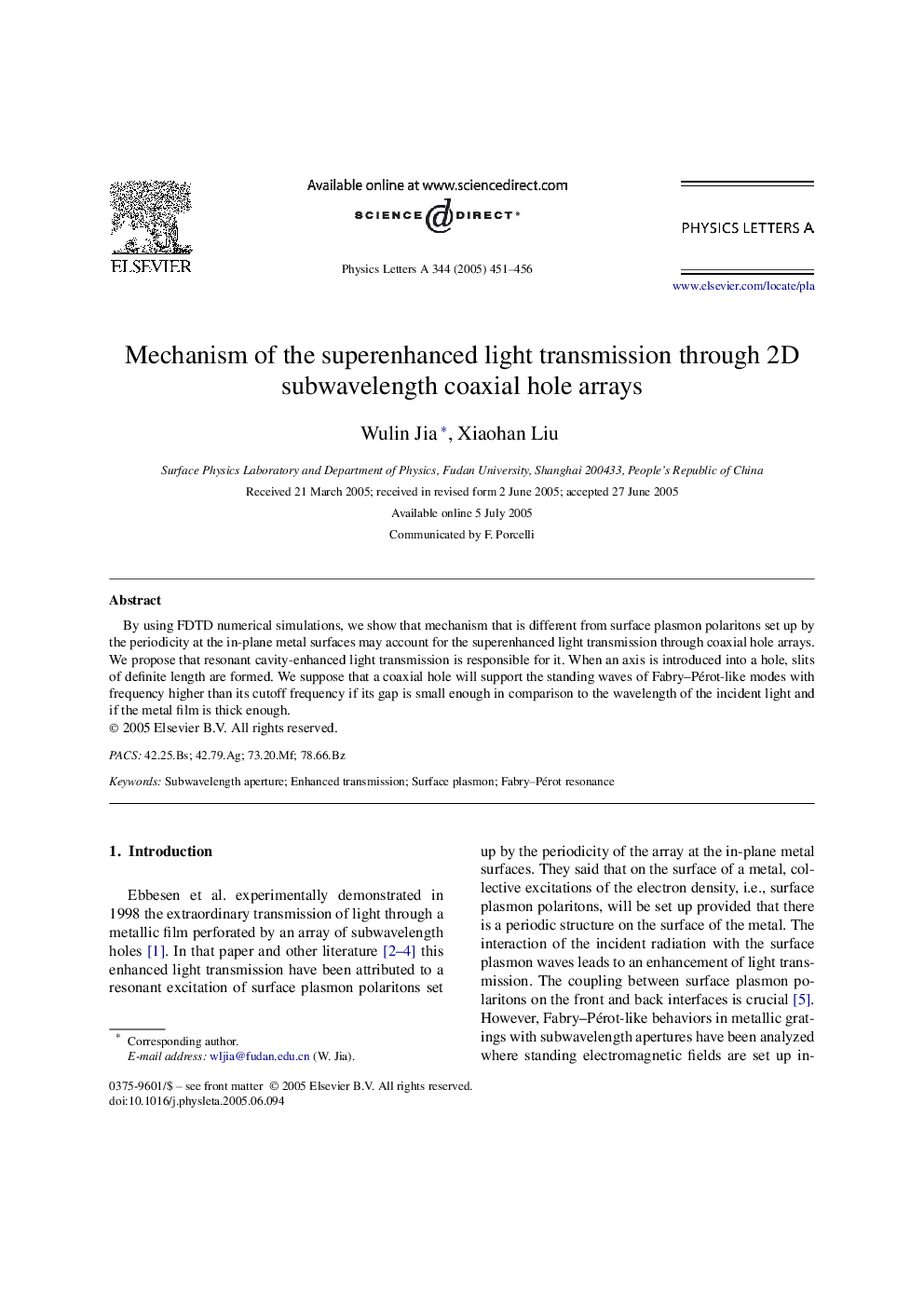| Article ID | Journal | Published Year | Pages | File Type |
|---|---|---|---|---|
| 10728400 | Physics Letters A | 2005 | 6 Pages |
Abstract
By using FDTD numerical simulations, we show that mechanism that is different from surface plasmon polaritons set up by the periodicity at the in-plane metal surfaces may account for the superenhanced light transmission through coaxial hole arrays. We propose that resonant cavity-enhanced light transmission is responsible for it. When an axis is introduced into a hole, slits of definite length are formed. We suppose that a coaxial hole will support the standing waves of Fabry-Pérot-like modes with frequency higher than its cutoff frequency if its gap is small enough in comparison to the wavelength of the incident light and if the metal film is thick enough.
Related Topics
Physical Sciences and Engineering
Physics and Astronomy
Physics and Astronomy (General)
Authors
Wulin Jia, Xiaohan Liu,
